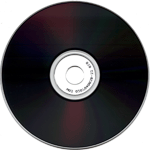| |
|
|
| |
Introduction to CD-RWs
The
obvious disadvantage with CD-Rs is that they can only
be written to once, making them less suitable for temporarily
storing data. Another drawback is that if the recording
process fails then you end up with an un-recoverable “coaster”.
The next step up from the recordable CD is the rewriteable
CD. The material for the recordable layer, known as optical
phase-change, has to be easily interchangeable between
transparent and opaque properties through use of a laser.
To achieve this, the dye layer found in a CD-R has been
replaced by a crystalline species that when heated to
one temperature turns opaque and when heated to another
turns transparent. The drive doing the writing therefore
needs to have three strengths of laser:
Highest:
Write laser
Middle:
Erase laser
Lowest:
Read laser
|
|
 |
Unfortunately, due to the nature of a metal alloy layer,
even in the “transparent,” crystalline form
a large percentage of light is absorbed. An average CD-RW
gives a reflectance of 15% - 25% while a standard CD has
a minimum reflectance of 70%. CD-RW compatible drives
must use stronger read lasers and have more sensitive
sensors. |
|
|
|
|
|